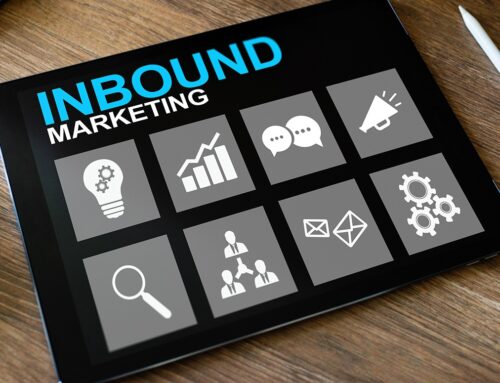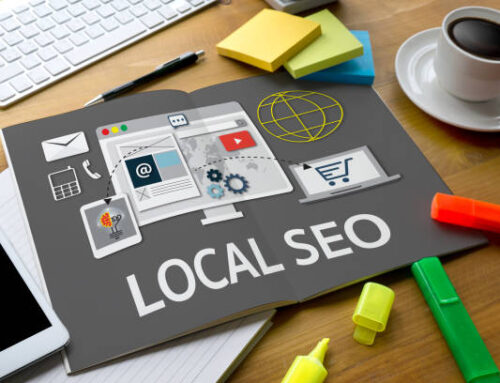If you want to get unbeatable local lead generation results, harness the power of blogging! This guide will show you how to overcome the biggest challenge financial advisors and appointment-dependent service providers face when blogging; ie, how to create regular quality content, and attract a local audience.
So let’s discuss how to use your marketing campaigns as powerfully as possible and promote your blog for maximum reach to potential clients.

Blogging is a powerful tool for local lead generation because it allows you to target a specific audience, craft compelling content, and utilize SEO strategies to increase your reach. You can maximize your lead generation results by creating quality content and promoting your blog through social media and email marketing. Also, blogging boosts local search results and SEO, making it easier for customers to find your business online.
So if you’re ready to get started generating leads like never before, read on for more tips on how local businesses can harness the power of blogging to generate high-quality leads with content marketing!
Benefits of Blogging for Local Lead Generation.
Lead generation is the process of attracting and converting strangers into leads, typically through online content or interactions. Once a lead is generated, businesses can then nurture these leads into customers through follow-up communications and provide value-added content or services that move the customer further down the sales funnel.

Blogging is an effective lead generation strategy because it allows small businesses and large businesses alike to actively attract strangers who are interested in their products or services. By creating quality blog content and promoting it through various channels, businesses can generate leads that they can then convert into paying customers. Blogs can rank for multiple keywords in each blog post and boost traffic thereby driving traffic to your website and lead generation landing page.
Why Blogging is a Powerful Tool for Local Lead Generation
There are several reasons why blogging is a powerful tool for local lead generation. First, blogging allows businesses to establish themselves as experts in their industry or field. By writing quality blog posts that offer valuable information, businesses can show potential customers that they know what they’re talking about and that they can be trusted. Secondly, blogging helps businesses to build relationships with potential customers by providing them with helpful information and engaging with them. These relationships are important because they help to build trust between the business and the customer, which is essential for making a sale. Finally, blogging gives businesses an opportunity to showcase their products or services in a non-salesy way by providing helpful tips or tutorials that show how the product can be used in everyday life.

How to Use Blogging to Generate Local Leads
There are several ways to use blogging to generate local leads, best practices include;
1) The first step is to use keyword-rich titles: In order for your blog post to appear in search engine results pages (SERPs), you need to use keywords throughout your title and throughout your blog post. However, don’t stuff your keywords too much as this will make your blog post sound unnatural and could get you penalized by Google. Instead, focus on using 1-2 long-tail keywords per blog post so that your title sounds natural and flows well.

2) Optimize your website for local SEO: In order for your blog posts to be found by people searching for information relevant to your business’s location, you need to optimize your website for local SEO. This means including location-specific keywords on your website (e., “Financial Advisor in Los Angeles”) as well as setting up Google My Business properly so that your business appears in local search results.
3) Promote your blog post on social media: Once you have published a new blog post, don’t forget to promote it on social media! Share it on Twitter, Facebook, LinkedIn, and any other platform where potential customers may be hanging out. Make sure to include visually appealing images along with each social media update so that people are more likely to click through and read your blog post.
Creating Quality Content to Attract Local Audiences
Local lead generation begins with knowing who your target audience is and understanding what they need and want. Before you can create content that appeals to your audience, you must first identify who they are. To do this, consider your current customer base and ask yourself who your ideal customer is. Once you have a good understanding of your target audience, you can begin creating content that resonates with them.
Crafting Compelling Content that Appeals to Your Local Audience
Now that you know who your target audience is, it’s time to start creating content that appeals to them. When crafting your content, keep in mind what your target audience needs and wants. What kind of information are they looking for? How can you help them solve their problems? By creating helpful and informative content, you’ll be able to capture the attention of your target audience and build trust with them.
Using SEO Strategies to Increase Your Reach
In order to reach a wider audience, it’s important to utilize SEO strategies when creating and promoting your content. By optimizing your website and blog posts for search engines, you’ll be able to increase your visibility and reach a larger number of potential leads.

Promoting Your Blogs to Maximize Lead Generation Results
As a local business, it’s important to have a strong presence on social media platforms that are popular in your area. This will help you reach a larger audience and generate more leads. Some of the most effective social media platforms for promoting your blogs and generating leads include Facebook, Twitter, and Instagram.
When using social media to promote your blog, it’s important to post engaging content that will encourage people to click through to your website. You can also use paid advertising on social media platforms to reach an even wider audience and get in front of more qualified leads.
Creating a Paid Ad Campaign for Maximum Reach
Paid advertising is one of the most effective ways to get the best results to promote your blog and generate leads. When creating a paid ad campaign, it’s important to target your ads specifically to people who are likely to be interested in your product or service. You can do this by targeting people based on their location, age, gender, interests, and other factors.
Paid advertising can be done through various platforms and used as a lead generation tool, including Google AdWords, Facebook Ads, and Twitter Ads. By creating a well-targeted ad campaign, you can reach a large number of potential customers and generate leads effectively.
Utilizing Email Marketing for Continuous Engagement
Email marketing is another effective way to promote your blog and generate leads locally. When sending emails, it’s important to segment your list so that you’re only sending emails to people who are likely to be interested in what you have to offer. You can segment your list based on factors such as location, age, gender, interests, and other factors. By doing this, you’ll be able to create more targeted email campaigns that will result in higher conversion rates. Additionally, you can use email automation tools to send triggered emails based on certain actions that users take (such as subscribing to your blog or visiting your website). This will help you keep users engaged with your brand and increase the chances of generating leads from them in the future.
Email marketing is a powerful tool that can help you generate leads and promote your blog effectively. By segmenting your list and sending targeted emails, you can increase your conversion rate and reach a larger audience. Additionally, using email automation can help you keep users engaged with your brand and increase the chances of generating leads from them in the future.
Blogging boosts Local Search Results and Local SEO

Local search engine optimization (SEO) is critical for businesses that want to be visible in search engines when people in their area are looking for products or services they offer. And one of the best ways to improve your local SEO is by creating quality blog content. In this section, we’ll take a look at how blogging can help boost your local search results and give your business a leg up on the competition.
How blogging affects local search results
One of the most important ranking factors for local SEO is Google My Business (GMB) signals. GMB signals are indicators that tell Google whether or not your business is relevant to searchers in your area. And one of the most important GMB signals is citations—mentions of your business name, address, and phone number (NAP) on other websites. When you publish blog posts, you create another opportunity to include citations of your NAP information, which can help improve your local SEO and increase your chances of being found in searches by people in your community who are looking for businesses like yours.
Another way blogging can help with local SEO is by increasing the number of inbound links pointing to your website—links from other websites that show readers they can find more information about what they’re interested in on your site. When you have a lot of high-quality inbound links pointing to your website, it tells Google that your site is a reputable source of information, which can help improve your ranking in search results. Creating compelling blog content that other websites want to link to is a great way to increase the number of high-quality inbound links pointing to your site, and it’s something you can control completely through your own efforts. You don’t need anyone’s permission to get started, and every link you earn helps improve your local SEO.
Optimizing Your Blog Posts For Local SEO
In addition to including citations of your NAP information, there are a few other things you can do to optimize your blog posts for local SEO :
- Use keyword-rich titles and descriptions: When people in your community search for businesses like yours online, they typically use keywords or phrases to describe what they’re looking for. Make sure you’re using these keywords in the titles and descriptions of your blog posts so Google knows that your content is relevant to searchers in your area. For example, if you own a pizzeria in Los Angeles, you might want to use keywords and phrases like “best pizza in Los Angeles,” pizza delivery in Los Angeles,” or “pizza restaurants near me .”
- Use geo-targeted keywords: Geo-targeted keywords are keywords or phrases that include the name of a city, state, or region. By using geo-targeted keywords in blog posts you can send strong signals to Google telling it that your content is relevant to people who live in a specific area. For example, if you own a pizzeria in Los Angeles, some geo-targeted keywords you could use might be “Los Angeles pizza,” “pizzas in LA,” or “LA pizza places .”
- Include photos and videos: People are more likely to read blog posts that include photos or videos than those that don’t. And Google shows a preference for sites in its search results that include multimedia elements like photos and videos, so including them in your blog posts can help to boost your search rankings. When adding photos or videos make sure they’re relevant to the topic of your post and optimize them with descriptive captions and tags so Google can easily index them.
- Promote posts on social media digital marketing efforts: Social media can be a great way to promote blog posts to reach a wider audience. When sharing posts on each platform be sure to use engaging copy and include hashtags when appropriate for additional exposure. You might also consider boosting popular posts with paid ads targeting people in the area serviced by your business.
The benefits of a strong local SEO strategy

A strong local SEO strategy can have a number of benefits for your business, including:
- An increase in web traffic: When your website ranks higher in search results, you’ll see an increase in the number of people visiting your site.
- More leads and sales: A higher ranking in search results can lead to more leads and sales for your business.
- Improved brand awareness and recognition: As more people see your website in search results, they’ll become more familiar with your brand, which can ultimately lead to improved brand awareness and recognition.
- A competitive edge: If your competitors aren’t investing in local SEO, you could get a leg up on them by doing so. This could give you a significant competitive advantage.
Blogging is a powerful tool that businesses can use to improve their local SEO and generate more leads from their community. By creating quality content and promoting it effectively on various web pages, financial advisors and other lead dependent service businesses can boost their web traffic, leads, sales, and brand recognition—giving them a leg up on the competition.
Conclusion
Now that you understand the benefits of blogging for local lead generation, as well as how to create quality content and promote your blog effectively, you are well on your way to generating unbeatable results. Keep in mind the importance of SEO in order to maximize your reach and maintain a high ranking in local search results. By following these simple tips, you will be able to generate an ongoing stream of leads from your local community.
Optimizing your website to be found on google maps and mobile devices to be found by local customers is paramount to business growth. Lead generation tactics must be well thought out and streamlined so you respect your marketing budget as you grow.
The best way to get leads and new customers is to attract their attention with great content and collect visitors’ contact information with these lead generation strategies. Once you have achieved this, it’s up to your sales team to convert these new leads into satisfied customers.



